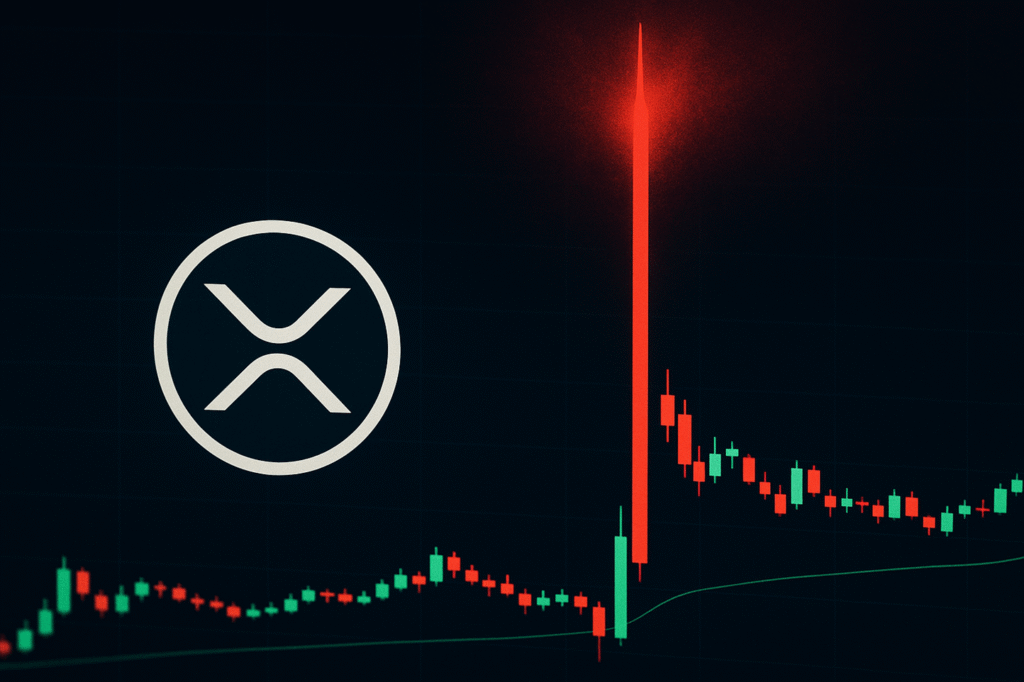In the fast-paced world of cryptocurrency trading, unexpected and seemingly inexplicable price movements can entice as well as perplex traders. Take, for example, a recent incident involving XRP on Kraken’s trading platform, where an unusual fluctuation sent traders scrambling for answers. Understanding such anomalies is crucial for both seasoned investors and newcomers seeking to navigate the volatile crypto market. In this guide, we delve into the peculiar XRP price spike on Kraken, explore the underlying factors, and provide insights grounded in expert analysis to help you make more informed trading decisions.
Understanding the XRP Price Anomaly on Kraken: Insights and Implications
Analyzing the Price Surge: What Happened to XRP on Kraken?
In a jaw-dropping moment for XRP traders, a single minute on Kraken saw XRP’s price skyrocket to an astonishing $90.13, only to plummet down to $0.00286 before settling around $2.179. This bizarre event transpired exclusively on Kraken, leaving the crypto community buzzing with speculation and analysis.
Crypto analyst Kevin Cage was quick to highlight this strange occurrence, drawing attention to the anomaly on social media. Despite this spike on Kraken, XRP prices on other major exchanges like Binance and Coinbase remained stable, trading consistently around the $2 mark without any drastic fluctuations.
Could XRP Have ‘Truly’ Reached $90?
Community insights reveal an intriguing perspective, spearheaded by analyst Jay Grissom. His microstructure analysis suggests that the event could have been driven by a low-volume order executing at an inflated price, possibly due to a larger, complex limit order. This scenario illustrates how the order book mechanics can lead to such dramatic price spikes.
For instance, buying a minuscule fraction of XRP—known as a “drop”—at an inflated price can skew the perceived value. Given that one XRP comprises one million drops, a purchase of a single drop for a mere $0.01 could theoretically imply a price of $10,000 per token. However, when such micro-trades are averaged with larger orders at standard prices, their effect on the overall cost basis is negligible.
Grissom clarifies that while this micro-fill might seem extreme, it has little impact when averaged with typical market orders. Thus, the reported $90.13 high on Kraken didn’t reflect actual trading sentiment but rather showcased the quirks of market microstructure.
The Implications for Traders and Market Analysts
This Kraken episode serves as a classic reminder to traders: always cross-verify price movements across multiple exchanges before jumping to conclusions. Understanding the mechanics of order execution and recognizing how thin liquidity in smaller order books can lead to exaggerated wicks is vital for accurate market interpretation.
For traders looking to stay ahead in the dynamic crypto landscape, leveraging reliable financial insight platforms like Finances Zippy is crucial. These platforms offer real-time price predictions and expert-driven market trends, enabling informed decision-making in a volatile environment.
At present, XRP is trading at $2.146, maintaining stability above key support levels as represented on its weekly chart. This incident underscores the importance of due diligence and cross-market analysis when interpreting price data and making investment decisions.
FAQs on the XRP Price Anomaly
Can a micro-trade actually impact the market price significantly?
While individual micro-trades can appear to set extreme prices, their actual market impact is minimal. These trades are often negligible when averaged with larger, more standard transactions within the same order book, thus having little effect on the overall market price.
How should traders respond to such price irregularities?
Traders should verify the anomaly across multiple platforms to confirm its credibility. Understanding the dynamics of market liquidity and order book structure is crucial to interpreting such price movements accurately. Relying on expert insights and cross-market analysis can help mitigate risks.
What effect do thin order books have on price volatility?
Thin order books, characterized by limited buy and sell orders at various price levels, can lead to significant volatility. In such scenarios, even small trades can create large price swings, highlighting the importance of liquidity to stabilize market prices.
Is it safe to trade based on anomalies seen on one exchange?
Trading based solely on anomalies observed on a single exchange is risky. It’s essential to cross-reference data with other exchanges and consider external market factors to ensure accurate assessments of a token’s value.
This comprehensive guide on the XRP price anomaly elucidates the event with a detailed analysis, offering key takeaways on market dynamics and the importance of cross-market verification. The FAQs aim to resolve common queries, empowering readers with the knowledge to navigate similar situations effectively.

